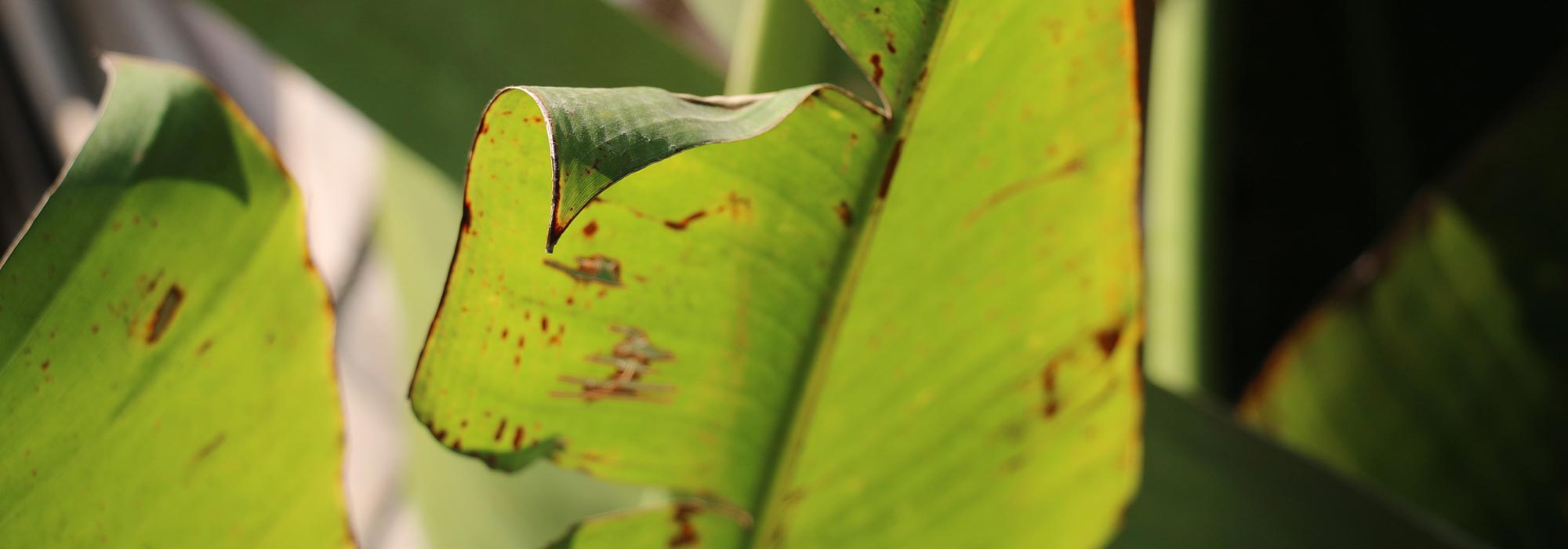
Diseases and pests of banana plants
Identification and natural solutions, prevention
Contents
The banana plant is an herbaceous plant that rarely suffers from diseases. Similarly, it is only very slightly sensitive to parasitic attacks. Thus, a sick banana plant, or one that is experiencing a parasitic attack, has most likely been weakened by cultural errors. It is therefore important to understand the plant’s needs and respond quickly to avoid such issues. Especially since some of these can be fatal, particularly rootstock rot.
Here is how to identify and treat diseases and parasites of banana plants naturally.
Rhizome rot in banana plants
Rhizome rot is the main disease affecting banana plants. Although they have high water needs, they are also sensitive to excess moisture, especially in winter. Therefore, overwatering during this season can lead to the disease. Similarly, the planting substrate for the banana plant must be well-draining to avoid any water stagnation.

Dead leaves of banana plant ©Carl Campbell – Flickr
Identifying rhizome rot
When a banana plant is affected by rhizome rot, its entire foliage, even the newest leaves, begins to yellow and soften. This yellowing precedes significant defoliation of the plant. Indeed, the leaves turn from yellow to brown as they dry out, before falling off. Meanwhile, the rhizomes soften and turn black. However, you will not be able to observe this symptom until spring, during the repotting of the banana plant.
Prevention and natural solutions
- Limit water intake during winter, from November to February.
- At the first signs of the disease, stop watering completely. If grown in a pot, move the banana plant to a warm space to encourage substrate evaporation. It is also important to empty the saucer under the pot after each watering.
- Repot the banana plant in the following spring and remove any rhizomes affected by rot.
The ring necrosis of banana leaves
Leaf ring necrosis in banana plants is mainly present in specimens grown in greenhouses or on a veranda. While mechanical shock can be the cause of the problem, the scorching rays of the sun that pass through the glass are generally the only culprits.
Identification of leaf ring necrosis
Sunburn causes here the appearance of yellow or brown spots on the leaves of the banana plant.
Prevention and natural solutions
- No need to panic, the phenomenon is not fatal for the banana plant. It is simply necessary to move the plant to a slightly shaded area.
Note: Lack of ventilation is also common in banana plants grown in greenhouses or on a veranda. This results in excessive and abnormal elongation of the plant. During the beautiful season, ensure that your potted banana plants benefit from outdoor air.
Discover other Musa - Banana tree
View all →Available in 3 sizes
Available in 1 sizes
Available in 2 sizes
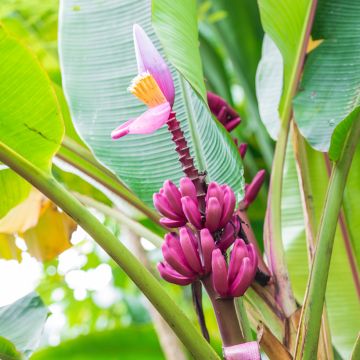
Available in 1 sizes
Available in 1 sizes
Available in 2 sizes
Available in 1 sizes
Available in 1 sizes
Available in 2 sizes
Deficiencies of the banana plant
The banana plant is a very hungry plant that requires regular fertiliser applications during the growing season. Without this, it may suffer from deficiencies.

Yellowing of banana leaves ©Boudewijn – Flickr
Identifying a deficient banana plant
In addition to the rotting of the rootstock, yellowing of the foliage may also indicate that your banana plant is suffering from a deficiency in mineral elements. This type of deficiency is also manifested by a slowdown in the growth of the plant during summer.
Prevention and natural solutions
- Regularly fertilise the substrate of the banana plant between the months of April and the end of September.
Read also
Potted Banana tree: planting and careMealybugs
Under our latitudes, mealybugs are among the main pests of the banana plant. This piercing-sucking insect feeds on the plant’s sap, sometimes to the point of suffocating the foliage.
Identifying the mealybug
The mealybug is easily recognised by its fluffy appearance. Small whitish clusters then appear on the undersides of the banana leaves.
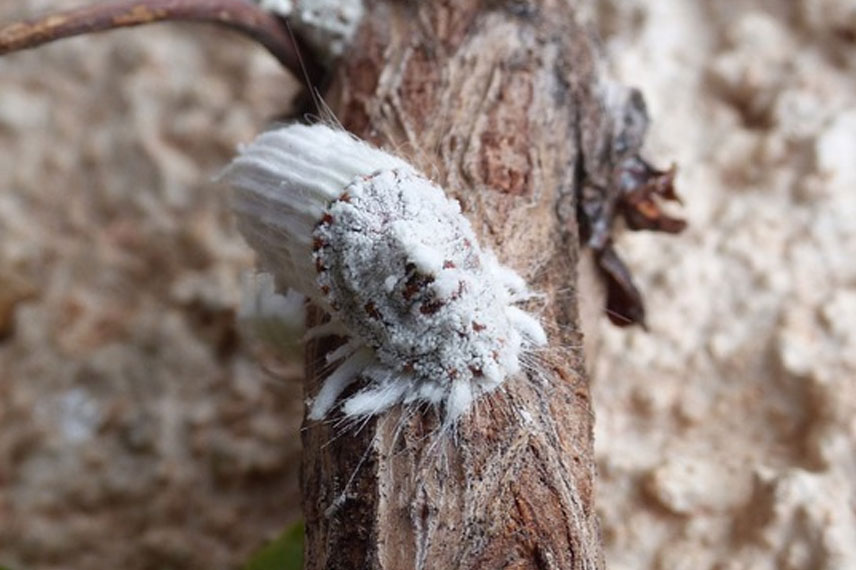
Mealybug
Prevention and natural solutions
- When they are not too numerous, you can easily manually remove the mealybugs using a simple damp paper.
- In the case of a massive infestation, spray a solution made of black soap, water, vegetable oil, and alcohol on the leaves of the plant.
Aphids and the Banana Plant
Another well-known piercing-sucking insect for gardeners, the aphid settles in colonies within the “cigar” of banana leaves, meaning in their heart. Here again, the parasite feeds on the sap of the banana plant after piercing its most sensitive areas. These wounds then weaken the plant, making it more susceptible to diseases.
Note: the banana aphid, Pentalonia nigronervosa, is a vector for the Bunchy Top virus, a viral disease that affects the banana plant in French Polynesia.
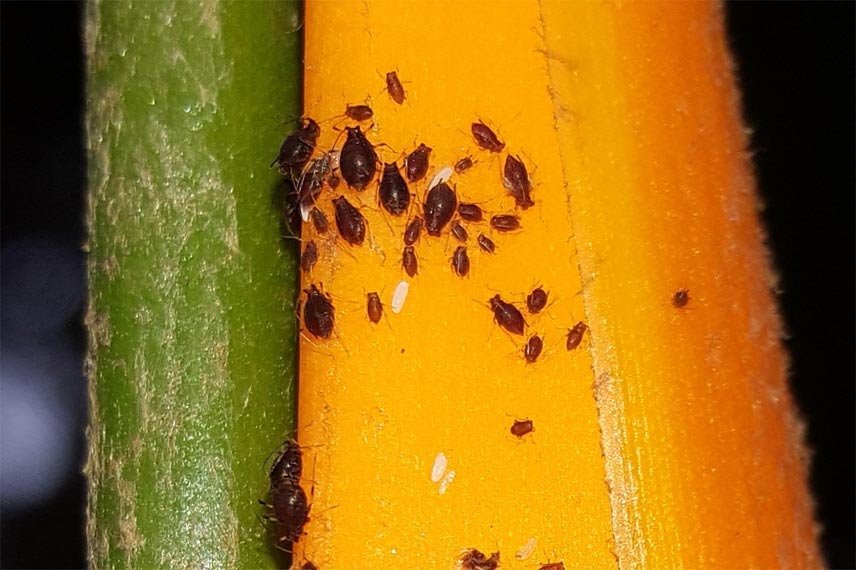
Pentalonia nigronervosa ©alessandradalia – iNaturalist
Identifying the aphid
The aphid is a very small insect that is black and moves in large colonies easily visible to the naked eye. Its honeydew usually also attracts ants.
Prevention and natural solutions
- Black soap is a very effective contact insecticidal for cleaning leaves of their aphids. The product also simultaneously kills the larvae of this insect.
Mites and the Banana Plant
Again, red or yellow spider mite attacks are more commonly observed on plants grown indoors, in a warm and dry environment. However, note that these attacks are very rare on the banana plant.
Identifying Mites
The presence of mites is usually detected by the webs they weave inside the petioles of the plant.
Prevention and Natural Solutions
- A humid atmosphere greatly limits the proliferation of mites. Regularly spray a little water on the foliage of your banana plant to protect it.
- In case of a significant attack, carry out sprays of diluted rosemary essential oil in water on the leaves. Garlic decoction sprays are also very effective against mites.
- Subscribe!
- Contents

































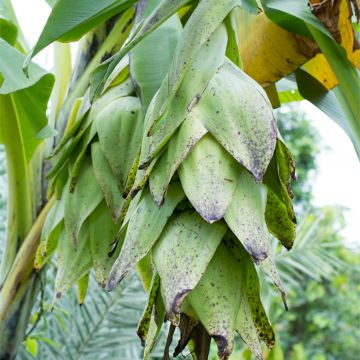
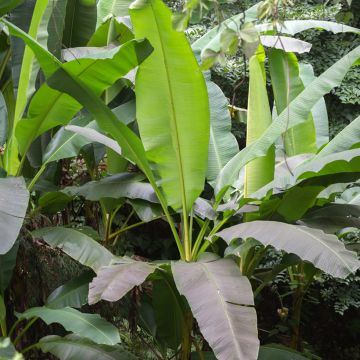
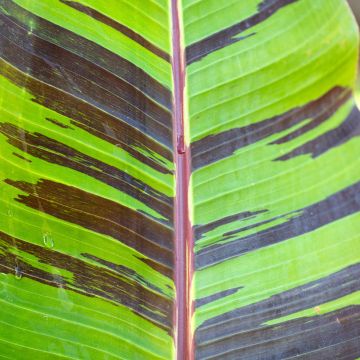

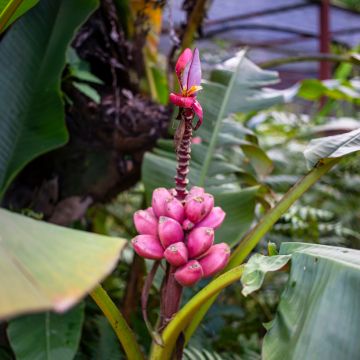



Comments